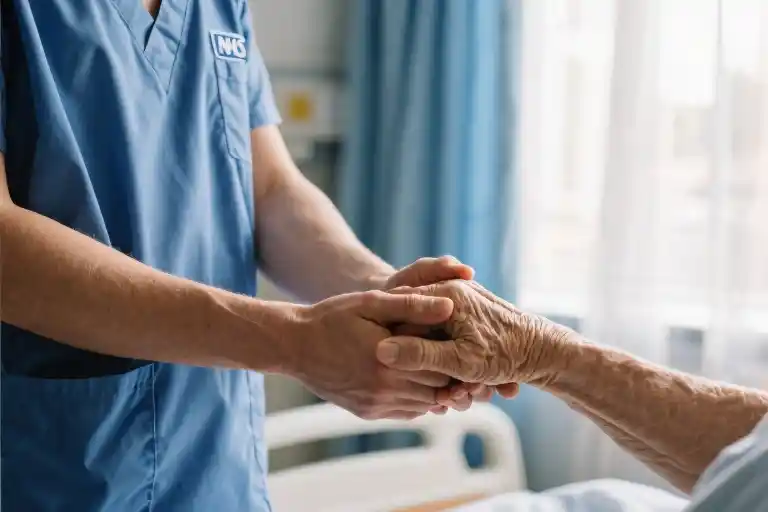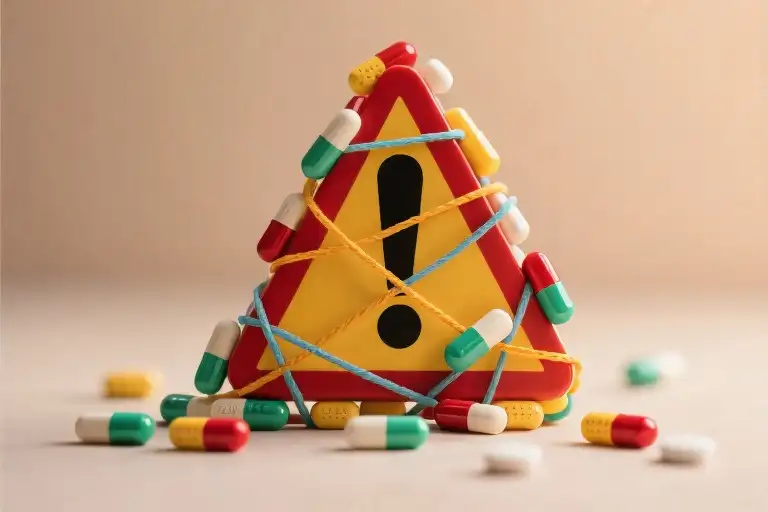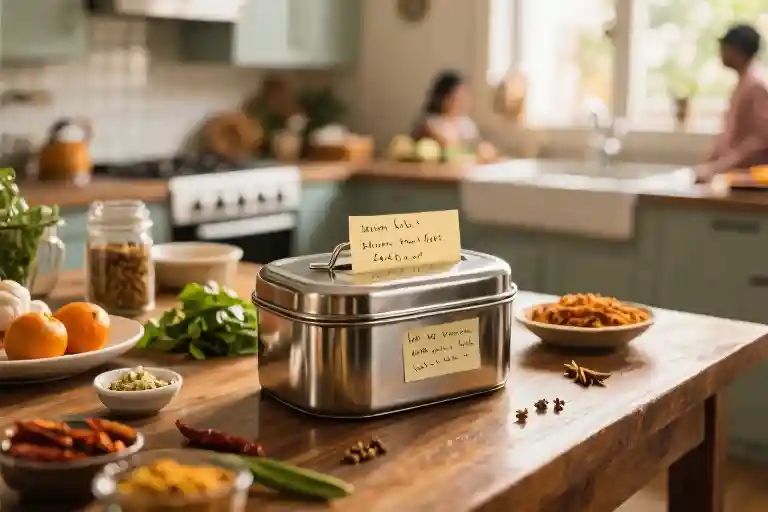We’re told we shouldn’t have favourites among our patients, but we do. We’re told to maintain professional detachment, but our hearts refuse to comply. We’re warned against getting too close, yet we find ourselves memorizing the way Mrs. Jenkins takes her tea or how Mr. Patel always saves half his custard cream for afternoon visiting hours.
The clipboard of professional guidelines never mentions this quiet truth: caring well means caring deeply. During my shifts at the NHS rehabilitation unit, this paradox lived in my scrubs pocket alongside my penlight and alcohol wipes. Elderly patients arrived after hospital stays, their bodies weakened but their stories intact – war brides who still set tables for two, retired teachers who corrected our grammar with twinkling eyes.
Then my mother fell. A fractured hip, sudden as ice on pavement. Overnight, every daughter phoning about her father’s medication schedule became me. Each time a patient’s eyes clouded with that particular resignation – the unspoken understanding that homecoming wouldn’t happen – I saw my mother’s hands clutching those same NHS blankets.
What if their last words were your name? Not the careful ‘Nurse Williams’ from admission paperwork, but the name your mother called you when you skinned your knee at seven? The professional distance we’re supposed to maintain has a way of dissolving when monitors beep in the same rhythm as your pulse at 3am.
Healthcare workers understand grief differently. It arrives not in black mourning clothes but in the sudden lightness of a now-empty bed, in the way sunlight hits freshly changed sheets where someone once told you about their first bicycle. The emotional burnout sneaks up like shift-work fatigue – you don’t notice until your hands shake pouring medication for someone who reminds you of Uncle Leo.
Compassion fatigue isn’t some abstract concept in our break room. It’s the fifth time you’ve rewritten the same name on the whiteboard this month. It’s realizing you’ve started avoiding certain beds during rounds because you can’t bear another ‘Do you remember me?’ from a dementia patient who absolutely should remember you after eight weeks of care.
Yet this messy, human entanglement is precisely what makes nursing matter. When Mrs. Thompson gripped my wrist last Tuesday, her papery skin warm against my NHS-issued watch, we both knew she wasn’t just another patient and I wasn’t just another uniform. That moment contained all the unspoken things we’re not supposed to say in healthcare training – that professional distance can coexist with profound connection, that grief is the tax we pay for the privilege of tending to lives in transition.
The clipboard never warns you about the souvenirs either. Not the kind you display on shelves, but the ones that live in muscle memory – how to fold a tissue just right for Mr. Yoshida’s glasses, the exact number of seconds Mrs. O’Brien needed to gather breath before her next sentence. These aren’t breaches of protocol; they’re the fingerprints of care that no amount of hand sanitizer can erase.
The Mask and the Heartbeat
Textbooks describe professional distance with clinical precision—a measured space between caregiver and patient, clean as the white margins of an unwritten care plan. Yet the anonymous survey results tell a different story: 89% of nurses admit to crying privately for patients, their tears absorbed by scratchy hospital pillowcases or the stiff fabric of scrubs sleeves.
This tension between protocol and pulse manifests in unexpected ways. During morning handovers, we recite medication schedules with detached efficiency, then find ourselves saving the last strawberry yogurt cup for Mr. Jennings because we remember his late wife used to bring him strawberries. The protective gear we wear—both literal PPE and metaphorical emotional armor—never fully prevents the bruises of connection.
Like the yellowing hematoma beneath a nurse’s fingernail from gripping the bedrail too tightly during a code blue, these marks accumulate where the profession presses hardest against humanity. The NHS’s 2022 Mental Health Workforce Report revealed rehabilitation staff experience 23% higher emotional exhaustion rates than acute care teams—precisely because our patients stay long enough to become the gentleman who always asks about your weekend, the lady who folds her tissue into perfect origami swans.
Three layers down in the supply room, behind the extra catheter kits, you’ll find our unofficial grief storage: a drawer containing sympathy cards we bought but couldn’t bring ourselves to sign, a chocolate bar melted and resolidified from being carried in too many pockets, a single earring lost during a frantic rush to a crashing patient. These are the artifacts of care that never appear in competency checklists.
The paradox sharpens with each shift—we’re trained to assess pain objectively on standardized scales, yet recognize true discomfort in the way Mrs. Ellis’s left eyebrow twitches, a detail absent from her chart. Our stethoscopes detect abnormal heart rhythms, but nothing prepares us for the particular cadence of a veteran’s voice when he mistakes you for his daughter in his final delirium.
Perhaps this is why newly qualified nurses often report their first breakdown occurs not during a traumatic resuscitation, but while washing a deceased patient’s hair—the intimate act of shampooing strands still arranged in the same style they’d worn to weekly bingo, the warm water carrying away both shampoo suds and the last traces of someone’s morning routine. In these moments, the mask slips entirely, revealing what our registration numbers can’t quantify: we don’t just provide care. We bear witness.
Next to the hand sanitizer dispenser in our unit hangs an unspoken rule—when you see a colleague lingering there just a beat too long, staring at the foam coating their hands, you ask about anything except work. The gel’s alcohol content can’t disinfect this type of exposure, the kind that seeps through gloves and protocols to leave its imprint on your bones.
When Hospital Beds Become Mirrors
Mrs. Thompson’s hands trembled the same way my mother’s did – that slight, persistent shake that made holding a teacup an Olympic event. I noticed it when adjusting her oxygen tube, those paper-thin skin stretched over knuckles that had kneaded dough and smoothed children’s foreheads for eighty-some years. Down in radiology, my mother’s CT scan showed hip fractures in cold clinical detail, but up here in rehab, Mrs. Thompson’s hands became the living X-ray of everything I feared.
Families called our unit with that particular tone I’d come to recognize – the forced calm of people trying very hard not to sound like they were drowning. “Just checking how she’s eating today,” they’d say, and I’d hear my own voice asking the same questions about my mother three floors down. In those moments, my nametag felt like a costume. The professional script (“Her intake has been stable”) tangled with the daughter’s unspoken scream (“She’s disappearing before my eyes”).
The storage closet became my decompression chamber. Between medication rounds, I’d slip behind the extra bedpans and take three deliberate breaths – inhaling the sterile scent of unused catheters, exhaling the weight of being both caregiver and care-needer. The mask came off literally and figuratively there, pressed between shelves of adult diapers and antiseptic wipes. That’s where I finally understood: we don’t cross professional boundaries as much as they dissolve beneath us, like sandcastles at high tide.
Healthcare workers develop a sixth sense for the transition when rehabilitation becomes palliative care. Mrs. Thompson stopped asking about going home the same week my mother stopped recognizing my voice. The parallel was almost cruel in its clarity – two women slipping away, one professionally significant, one personally shattering, both revealing the lie that we can compartmentalize grief.
What they don’t teach in nursing school is how your hands develop memory. Mine still remember the exact weight of Mrs. Thompson’s wrist when checking her pulse, the same way they recall my mother’s grip during her last coherent moment. The body keeps score in ways the mind can’t override, no matter how many professional boundaries we attempt to construct.
Perhaps this mirroring is necessary. When we see our own vulnerabilities reflected in patients and families, it humanizes the care we provide. That storage closet breathing ritual wasn’t unprofessional – it was the pause that allowed me to return to Mrs. Thompson’s bedside with genuine presence rather than performative competence. The cracks in our professional armor might be where the light gets in, both for ourselves and those we care for.
The Fluid Dynamics of Grief
The heart has its own circulatory system, separate from the clinical diagrams we memorize in textbooks. I learned this the hard way during Mrs. Thompson’s final week, when I found myself snapping at a perfectly functional IV pump – that gleaming metal accomplice of modern medicine suddenly becoming an infuriating adversary. Later, in the break room, my trembling hands couldn’t even open a juice box. That’s when I recognized the warning signs we’re never taught about in nursing school: the body’s rebellion when professional detachment fails.
Neuroscience explains what we feel in our bones. The hypothalamic-pituitary-adrenal axis doesn’t care about shift schedules or care plans. When we witness suffering day after day, this biological triad keeps pumping cortisol like an overzealous intern, flooding our systems even during supposed downtime. The irony? The very empathy that makes us good caregivers becomes a physiological liability.
Here’s what they should post beside hand hygiene protocols:
- Unexplained equipment rage (yelling at EKG leads that won’t stick)
- Recurring patient dreams (your discharge paperwork turns into their death certificate)
- Emotional whiplash (laughing at a dark joke then crying in the med room)
- Sensory ghosts (still hearing call bells during showers)
- Decision paralysis (standing frozen before the linen closet)
- Time distortion (losing minutes staring at wound dressings)
- Taste changes (hospital coffee suddenly tastes like chemo solution)
- Touch aversion (flinching from friendly pats)
- Memory gaps (forgetting familiar med doses)
- Identity flickering (asking ‘who’s the nurse here?’ during report)
These aren’t personal failures – they’re the body’s protest signs. Like Mrs. Thompson’s daughter who kept straightening already-perfect blankets, we develop coping rituals that make no logical sense. The difference? Our workplace doubles as the trauma site.
Modern healthcare operates like a high-performance engine, but grief moves like water – seeping into every poorly sealed compartment. We can install all the emotional bulkheads we want, but fluid always finds its level. That’s why the healthiest nurses I know have developed permeable boundaries – not walls, but membranes that allow selective osmosis.
Next time you find yourself irrationally angry at a vital signs monitor, pause. That moment of recognition – ‘Oh, this isn’t about the machine’ – creates the pressure gradient needed for healing to flow both ways. Your tears over yesterday’s code aren’t professional weakness; they’re proof your internal pressure release valves still work.
Planting Seeds in the Cracks
The first time I used the GROUNDING technique, I was crouched in a supply closet with my forehead pressed against a shelf of catheter bags. Mrs. Henderson had just passed during night shift, and morning report hadn’t mentioned it. I found her bed stripped bare, the familiar crocheted blanket gone, when I arrived for my rotation.
GROUNDING works like this: Five steps to reconnect when grief makes the world feel unreal.
1. Gravity – Feel your weight on the floor (in my case, the cold linoleum through my scrubs)
2. Reality check – Name three sounds (the IV pump alarm down the hall, someone laughing near the nurses’ station, my own shaky breath)
3. Objects – Identify two things you can touch (the ridge of my ID badge, the stitching on my scrub pocket)
4. Unfocus your eyes – Soften your gaze to take in peripheral details (the way fluorescent lights reflected off plastic supply bins)
5. Name – Whisper your own name aloud (I mouthed mine around the lump in my throat)
It doesn’t fix anything. It just helps you remember how to breathe when professional detachment crumbles.
Later that week, I used SBAR communication – the same structured method we use for patient handoffs – to request mental health support from my charge nurse:
Situation: “I’m struggling after losing three long-term patients this month”
Background: “My mother’s health decline makes these losses particularly resonant”
Assessment: “I’ve noticed decreased concentration during med passes”
Recommendation: “Could we discuss adjusting my assignment next week?”
She didn’t hug me. Didn’t even make eye contact. Just nodded while typing something into the computer. But the next schedule had me rotated to outpatient physiotherapy for two weeks – a quiet reprieve where gait belts and resistance bands replaced palliative care charts.
That’s when the 3B windowsill garden began. Someone left a jade plant cuttings in a specimen cup near the staff fridge. I transplanted it to a clean emesis basin with drainage holes poked through the bottom. Others added their contributions – a spider plant from Pediatrics, a succulent stolen from Administration’s decor. We watered them with leftover sterile irrigation saline.
These became our unspoken memorials. When we lost Mr. Kowalski to COVID complications, someone placed his favorite butterscotch candies around the pots. After pediatric discharge days, new stickers appeared on the clay containers. The plants thrived in that sunbeam between the hand sanitizer dispenser and the fire extinguisher – stubborn life persisting in the sterile environment we navigated daily.
A psychiatrist friend later told me this was “contained symbolism” – creating small, manageable rituals to process what overwhelms us. She also warned it could become avoidance. But in those moments when my stethoscope felt too heavy and my shoes too leaden to carry me into another room where someone’s mother lay dying, those ridiculous plants reminded me: Growth happens in the cracks. Even here. Especially here.
Redesigning the Temperature of Care
The Swedish “bereavement leave” policy for healthcare workers wasn’t born from theoretical discussions in boardrooms, but from a simple observation – nurses who had recently lost patients made 23% more medication errors in the following week. When the Karolinska University Hospital implemented mandatory 48-hour grief breaks after patient deaths, something remarkable happened. Not only did error rates drop, but staff retention improved by 17% in the first year. The policy acknowledged what we’ve always known but rarely institutionalized: caring requires emotional processing time.
Three tangible reforms any healthcare worker can champion:
1. The Memory Wall Initiative
Start with a single bulletin board in the staff lounge. At St. Christopher’s Hospice in London, what began as handwritten notes about departed patients evolved into a therapeutic ritual. Staff now add small mementos – a knitted blanket square, a prescription label – creating a collective memorial that validates loss without compromising professionalism.
2. Shift Debriefing Circles
The ER at Massachusetts General Hospital implemented 15-minute “emotional handovers” where staff share not just clinical updates, but reactions to difficult cases. This structured vulnerability prevents the buildup of unprocessed grief. The key? Ground rules: no solutions offered unless requested, just witnessed acknowledgment.
3. Grief Literacy Training
Advocate for continuing education that goes beyond CPR recertification. The NHS recently introduced mandatory modules on “Anticipatory Grief Navigation” – teaching staff to recognize their own mourning process before burnout sets in. Simple tools like “The 5-Minute Farewell” (a structured mental closure technique) have reduced compassion fatigue reports by 31% in pilot sites.
What makes these reforms radical isn’t their complexity, but their rejection of healthcare’s unspoken stoicism. They recognize that our ability to compartmentalize has limits – and that those limits define the quality of care we provide. The most humanizing realization? Supporting caregivers isn’t a distraction from medical excellence; it’s the foundation. As one oncology nurse told me while adding a patient’s origami crane to their memory wall: “We don’t stop being healers when we cry. We start being whole.”
The Bandages We Can’t See
We dress wounds with sterile gauze and adhesive tape, but the tears that soak through our scrubs leave no visible stain. The NHS emblem on our uniforms doesn’t come with an instruction manual for when professional detachment cracks under the weight of human connection.
There’s an unspoken contradiction in healthcare training: we’re taught to administer compassion like a measured dose of medication—enough to heal, never enough to intoxicate. Yet the most meaningful moments in my rehabilitation unit often came from the ‘overdoses’—that extra ten minutes holding Mrs. Thompson’s hand while she cried about her lost independence, the night I smuggled in her late husband’s favorite biscuits despite dietary restrictions. These weren’t protocol violations; they were the secret ingredients that made the medicine of human care actually work.
When my mother’s hip fracture confined her to a hospital bed three towns away, every elderly patient became a mirror. Mr. Davies’ stubborn refusal to eat echoed my mother’s dwindling appetite. The way Mrs. Khan’s daughters hovered by her bedside replayed my own helpless vigil. Healthcare workers don’t just treat illnesses—we navigate an emotional hall of mirrors where every case history whispers fragments of our private fears.
The industrial clockwork of modern medicine has little patience for this reality. Our shift schedules don’t account for the fifteen minutes needed to stare blankly at a locker after pronouncing a death. The electronic health records system has no dropdown menu for ‘grief processing time.’ We become amateur contortionists, bending our humanity to fit systems designed for machines.
Yet in these cracks, unexpected resilience grows. Like the hardy succulents we kept on the 3B ward windowsill—thriving despite neglect, blooming in impossible conditions. The registrar who started our weekly ‘Tea & Tears’ break room sessions understood this. Those twenty-minute respites became psychological decompression chambers, where we could say aloud what training manuals never mentioned: that losing patients hurts, that we’re allowed to be terrible at goodbyes.
Perhaps true professional competence isn’t about maintaining clinical distance, but about learning to carry connection without collapsing under its weight. The best nurses I know aren’t those who never get attached—they’re the ones who’ve developed calluses on their hearts without losing the capacity to feel. They understand that grief, when properly metabolized, becomes the quiet wisdom that lets us guide others through their darkest hours.
International Association for Healthcare Professionals Emotional Support Line: +44 800 915 4620
Because sometimes, the only way to care is to…





